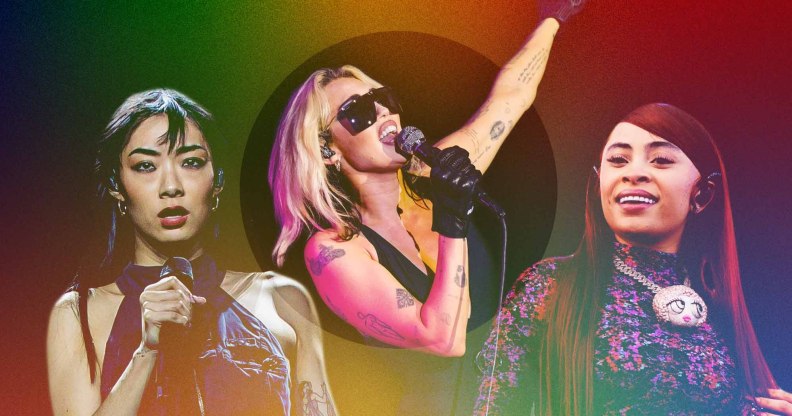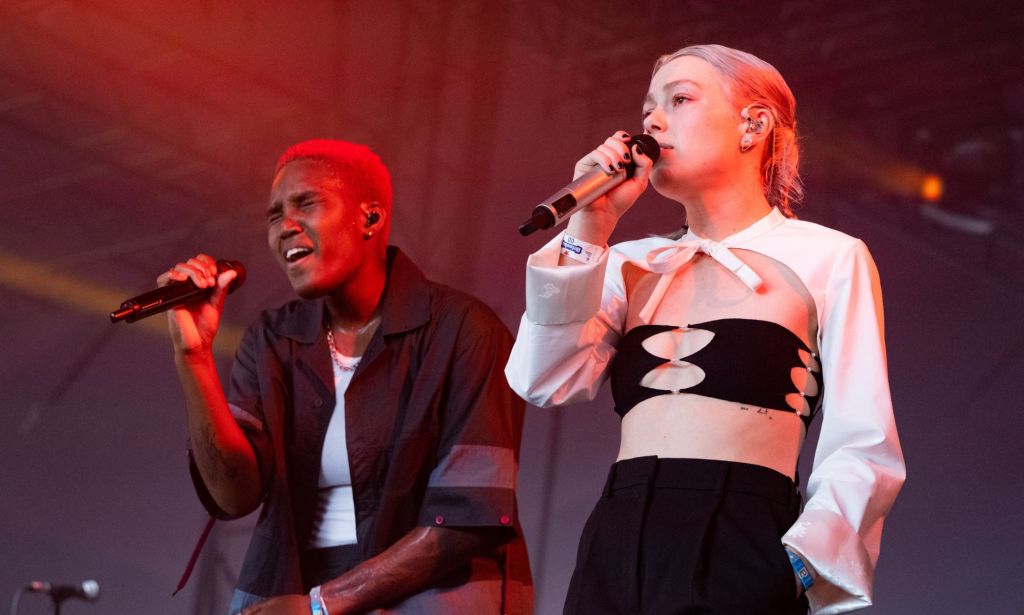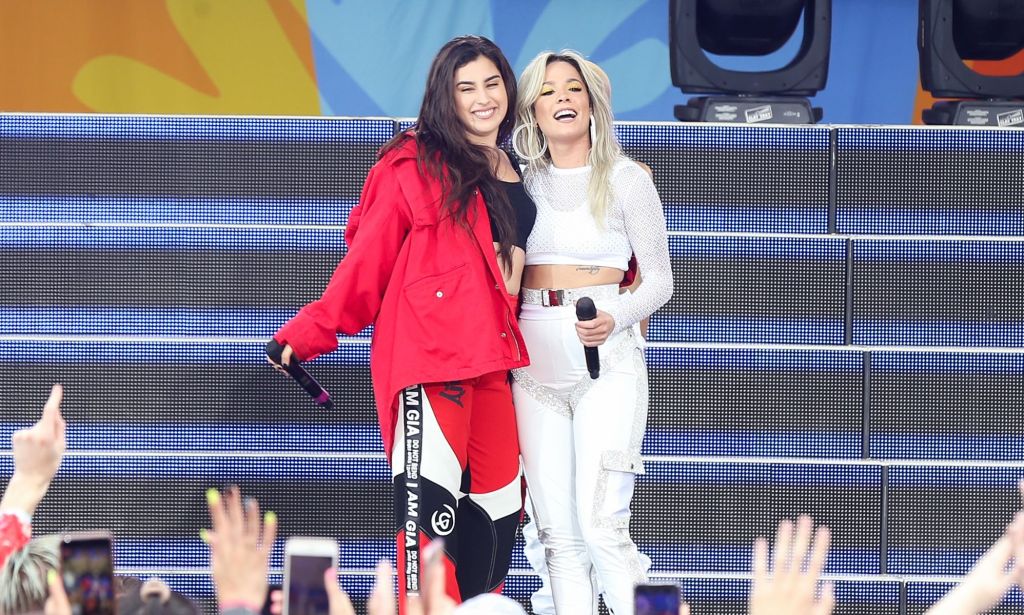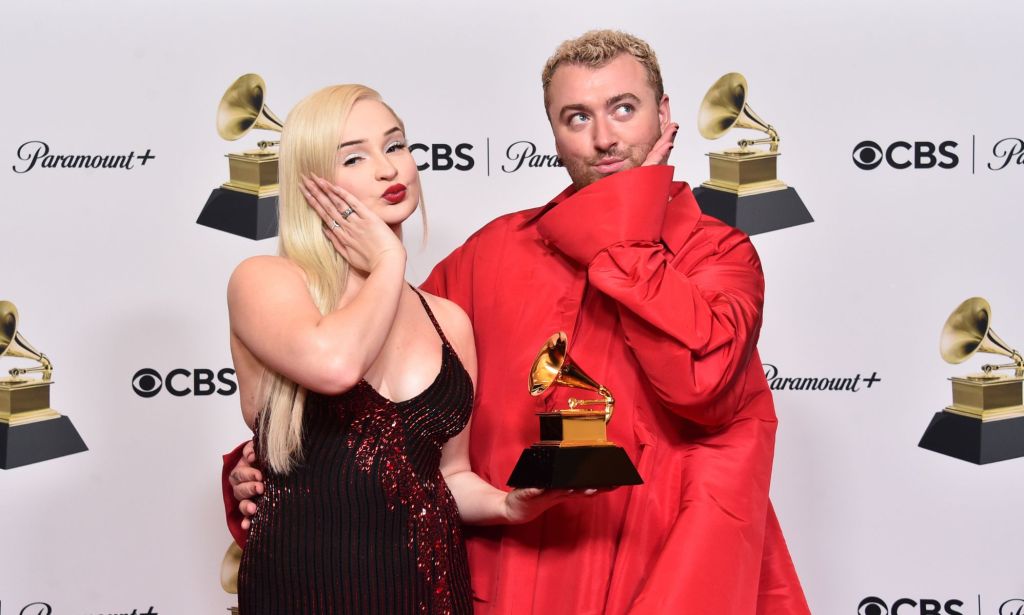From Miley Cyrus to boygenius, queer women in music are showing the power of collaboration

Queer women are leading the music industry in 2023. In the current climate, that matters. (Getty)
As the fireworks crackled to welcome in the beginning of 2023, Miley Cyrus drew in millions with her New Year’s Eve special, performing alongside the likes of Sia, Fletcher, Brandi Carlile and Anitta.
It was, essentially, a showcase of queer women supporting each other; a celebration of their impact on the music industry.
Miley’s New Year’s Eve Party signified the year started as it meant to go on. While we’re little more than two months into 2023, it’s already shaping up to be one of the biggest years in recent history for queer women in music.
Cyrus’s latest single “Flowers” has sat atop the US and UK charts for the past six weeks. While the song might be about her ex-husband Liam Hemsworth, the artist behind it is pansexual and genderfluid.
At the Grammys last month, Kim Petras made history as the first openly trans woman to bag an award at the ceremony. Bisexual rapper Ice Spice is taking over TikTok and could soon claim the number one spot with her remix of PinkPantheress’ “Boy’s A Liar”, while pansexual pop star Rina Sawayama is heavily rumoured to be representing the UK at Eurovision, one of the calendar’s most prestigious music events.
Of course, queer women have existed and excelled in popular music for decades, from Dusty Springfield and Whitney Houston, to Queen Latifah to St Vincent. This year, queer women are thriving, but there seems to be one increasingly noticeable facet of their success: they’re working together.
Take indie supergroup boygenius. While the trio – made up of queer women musicians Phoebe Bridgers, Julien Baker, and Lucy Dacus – formed and released their eponymous EP in 2018, they’re arguably only properly kicking things into gear this year, having announced their debut album The Record in January.
In preparation for the record’s release, they’ve announced that bisexual actress Kristen Stewart will direct three of their music videos, while their first UK headline tour will feature support from bisexual, trans singer Ethel Cain and band MUNA, of which all three members identify as queer (Naomi McPherson identifies as non-binary).
Away from her boygenius project, Bridgers is teaming up with fellow bisexual singer Arlo Parks, on “Pegasus” from Parks’ upcoming album, My Soft Machine.
Back to Miley. The pop icon last week announced that the only two collaborations on her upcoming album, Endless Summer Vacation, due out this week, were Sia and folk legend Brandi Carlile.
Behind the scenes, too, queer women are banding together to make music. Bisexual, Grammy-award-winning R&B star Kali Uchis released her third studio album Red Moon in Venus last week, featuring work created with fellow bisexual star Tayla Parx.
Rebecca Black, who came out as queer in 2020, released her debut album last month featuring an emotional track that was written alongside bisexual singer-songwriter Lauren Aquilina.

Of course, queer women coming together is nothing new or revolutionary. From Hayley Kiyoko and Kehlani to Halsey and Lauren Jauregui, women from within the community have been creating musical magic for years.
However, under the political and cultural climate in which queer artists are operating, this growing trend feels significant.
As LGBTQ+ people confront growing hostility across both sides of the pond, from drag bans to bigoted rhetoric, the community is becoming more reliant on turning inwards for support. Meanwhile, right-wing groups are attempting to remove queer stories from bookshelves, meaning LGBTQ+ representation across pop culture is growing ever-more essential.
For LGBTQ+ musicians, then, the act of showing up together and expressing queer joy is both powerful and political.

The music industry, too, has issues. While LGBTQ+ inclusion has undoubtedly increased in recent years, artists from the queer community are still woefully underrepresented. According to data from Luminate and Billboard, out of the top 1,000 most-listened to artists, a mere two per cent identify as LGBTQ+.
For women, it’s a particularly gruelling industry. Over the past 10 years, less than a quarter of all artists, producers and song-writers who made it to Billboard’s Hot 100 Year-End Chart were women.
Even those women who do find success come up against horrendous abuse and discrimination along the way. According to a report by the Music Industry Research Association, two-thirds of female musicians have experienced sexual harassment.
High-profile artists including Lady Gaga, Raye, Bebe Rexha and Tinashe have come forward with stories of sexual misconduct or “uncomfortable” encounters at the hands of music industry insiders.
For some queer women existing in the music industry, working alongside those who understand and support them probably feels more like an act of necessity than one of choice.
Away from the pressures and politics of the music industry, there are more joyous reasons for queer women to create and celebrate their music together.

When LGBTQ+ artists do team up, the results can be phenomenal. In addition to monopolising award shows, Sam Smith and Kim Petras took over the charts globally last year with their hit song “Unholy”.
Frankie Goes To Hollywood’s Paul Rutherford and Holly Johnson unabashedly pushed queerness front and centre in the 1980s, bagging three number ones in the process. MUNA and Bridgers’ collaboration “Silk Chiffon” was one of 2022’s most-loved queer songs.
Plus, the market for LGBTQ+ musicians now is far broader than it ever was. The Luminate data shows that queer music fans spend more money and have more influence on the music industry as a whole compared with their straight, cis counterparts. Tally that up against LGBTQ+ fans being more likely to support LGBTQ+ artists, and the stage is set.
Space for queer women in music is growing, and the output is becoming ever-more exciting.
From Ashnikko’s debut album Weedkiller due this June, featuring collaborations with Ethel Cain, to Miley’s sure-to-be-a-hit album of LGBTQ+ collaborators, 2023 is the year of giving queer women their just rewards.
How did this story make you feel?

